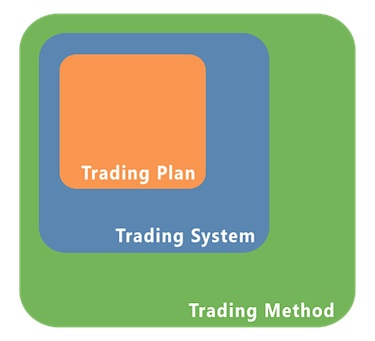Successful traders have a plan to win. By carefully putting the odds in their favor for the long term, successful traders will overtake gamblers who rely on random trades and a prayer.
If you want to win in any area of life, you must be disciplined, study, and do the hard work. There are no short cuts, and especially not in trading. You need to enter the markets prepared and with a detailed plan to enable success. Here are the components of a trading plan:
The Components of a trading plan:
1. Entering a trade: You must know clearly at what price you plan to enter your trade. Will it be a break through resistance, a bounce off support, or a specific price, or based on indicators? You need to be specific.
2. Exiting a trade: At what level will you know you are wrong? Loss of support, a price level, a trailing stop, or a stop loss? Know where you are getting out before you get in.
3. Stop placement: You must either have a mental stop, a stop loss entered, a time stop alone, or a time stop with an indicator.
4. Position sizing: You determine how much you are willing to risk on any one trade before you decide how many shares to trade. How much you can risk will determine how much you can buy, based on the equities price and volatility.
5. Money management parameters: Never risk more than 1% of your total capital on any one trade. (2% maximum for aggressive traders who can handle bigger drawdowns.)
6. What to trade: Trade things you are comfortable with. Swing trading range bound stocks, trend trading growth stocks, or trend following commodities or currencies. Trade what you know.
7. Trading time frames: Are you a day trader, position trader, swing trader, or long term trend follower? If you are a long term trend follower, don’t get shaken out of a position in the first day by taking profits or getting scared. Know your holding period and adjust your plan accordingly.
8. Backtesting: Do not trade any method until you reviewed charts over a few years to see how you would have done. Alternatively, utilize backtesting software to analyze historical data for your system. There are also precooked systems like CAN SLIM, The Turtles Trading System, and many Trend Following Systems. You need to begin trading knowing you have an edge.
9. Performance review: Keep a detailed record of your wins and losses. You need to be sure that your method is working in real trading. Review this after every 20 trades. Also, if you had any issues with discipline, then make notes, learn from your mistakes, and the make necessary adjustments.
10. Risk vs. Reward: Enter high probability trades where you are risking $1 to make $3, or trade a system that wins big in the long term through trend following.
Regardless of how you trade, every trader must have a trading plan. Period.
